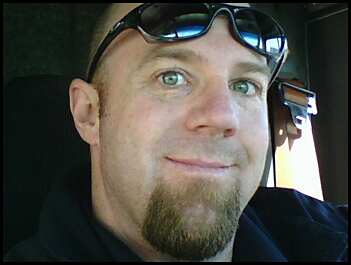FROM THE GRANDSTANDS: GIVE ME THE OLD SCHOOL
 richness of the foundation upon which the dreams of tomorrow were built.
richness of the foundation upon which the dreams of tomorrow were built.How could anyone not be impressed when a seventy-something Chris Karamesines holds his own against a Del Cox Jr. in Top Fuel?
Who doesn't cheer loudly when Warren Johnson puts it to the younger competition, when the seasoned Pro Stock driver goes through the gearbox quicker than a hot knife through butter?
We all love when battle-worn veterans, dragging decades of experience down the quarter-mile, break out the win light. And, the victory is all the sweeter when it's old school whipping up on new school. When yesterday's mousetrap proves as effective as today's fancier version.
Everyone loves a good “old” story. A story where age and experience triumph over youth and exuberance. A story which exposes the  richness of the foundation upon which the dreams of tomorrow were built.
richness of the foundation upon which the dreams of tomorrow were built.
How could anyone not be impressed when a seventy-something Chris Karamesines holds his own against a Del Cox Jr. in Top Fuel?
Who doesn't cheer loudly when Warren Johnson puts it to the younger competition, when the seasoned Pro Stock driver goes through the gearbox quicker than a hot knife through butter?
We all love when battle-worn veterans, dragging decades of experience down the quarter-mile, break out the win light. And, the victory is all the sweeter when it's old school whipping up on new school. When yesterday's mousetrap proves as effective as today's fancier version.
If you were sitting in the stands in Las Vegas, earlier this year, how could you not pump your fist for the old guys as Ted Seipel, 72, won his Super Gas final round against a much younger competitor, 21 year old Justin Lamb.
The victory was poetry in motion. Seipel did it old style. He raced the same way he's raced all his life. He raced the way drag racing was meant to be. He raced tough, a Clint Eastwood “Gran Torino” kind of tough.
a d v e r t i s e m e n t
Click to visit our sponsor's website
Seipel, of San Leandro, Ca., is a throwback to the days when indexed pro tree drag racing was a spectator sport. He leaves the starting line with his 406-inch, Chevrolet powered 1971 Ferrari and what you see is a 9.90-something run all the way.
There are no stops and restarts. No engines that sound like: duh … duh … duh … with electronics designed to slow the car then turn it loose to run the back half of the track like a banshee.
His car isn’t an eight-second Top Sportsman doorslammer slowed almost two seconds by a computer device. His is a car quick enough to run 9.60s, his foot planted heavily on the accelerator, but only under the right atmospheric conditions.
What Seipel did in Vegas was the equivalent of a printed drag racing magazine scooping the internet.
He was once featured in the best drag racing mag ever printed, Super Stock & Drag Illustrated, and was one of several drivers featured for racing the class as it was intended to be. A driver was supposed to race the quarter-mile (or eighth) and run as close to the index as they could get without going quicker. Super Gas was intended to bring the diversity of bracket racing to the national event scene.
There was a day when a guy with a Doug Nash 5-speed could run competitively in the class.
Back in the day, a bolt under the throttle did the job to keep a racer honest to the index. They didn’t need some electronic gizmo designed for killing the ignition for a prescribed amount of time.
A team measured the weather with a sling-psychrometer and perhaps a used altimeter that was likely purchased at a yard sale. And then they adjusted the bolt.
Cars back then had character with names like ‘Prince Valiant’, ‘Hot n’ Nasty’ and the ‘Loose Caboose’. Today these cars run a universal name – B...B...B...B...Boring.
a d v e r t i s e m e n t
Click to visit our sponsor's website
In the day, if you cut a 0.420 reaction time (on a .400 pro tree) you had nailed the tree. If you ran between a 9.90 and a 9.92 you were ‘the man’.
There was a day when a Super Gas driver had to qualify for the race. Now anyone who shows up gets to race. No one goes home, everyone races.
Boy, have times changed.
Today’s Super Gas is more like little league baseball. Everyone gets to play because we wouldn’t want little Timmy or Susie to get a complex.
I got news for you, if little Timmy couldn’t make the cut back in Seipel’s day, little Timmy had to go home and learn how to play the game better.
Today if Timmah doesn’t come to race Super Gas with an eight-second capable, Corvette roadster with a powerglide transmission then he might as well stay home.
No one believes today's Super Gas drivers lack talent. However, there’s a big difference between figuring out a math problem with a pencil and paper and just keying in numbers on a calculator, and not having to worry that a heavy foot might outrun the index.
For some of us, Super Gas has become predictable.
Myself and others, we prefer our drag racing unpredictable, like it was in Vegas, where a long in the odds 72 year old showed everyone what Super Gas was and still could be.
Seipel reached the Super Gas final in Las Vegas and when he rolled to the starting line, he was faced with a 21-year old Justin Lamb, a college student and 2009 national event winner already with a 1968 Camaro roadster.
The engine in Lamb’s car made a lot more power than it needed to run the 10.05 altitude adjusted index.
Seipel, on the other hand, ran dead on the index and scored a .003 reaction time.
Not bad for a throwback.
Not a bad sight from the grandstands, either.
Thank you to those who took the time to offer their support and
suggestions for this column. If you have any ideas for me, please send
them here: tim5636sc@msn.com
We will see you next month.....From the Grandstands.
| {loadposition feedback} |






































